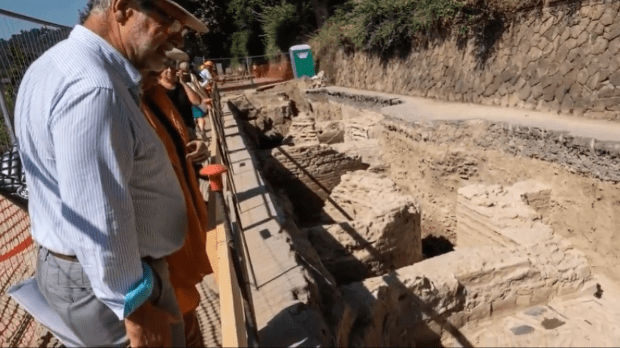Lenten Campaign 2025
This content is free of charge, as are all our articles.
Support us with a donation that is tax-deductible and enable us to continue to reach millions of readers.
While laying cables along the river Tiber, a crew of electrical technicians were surprised when they unearthed the remains of a building which dates between the 1st and 4th centuries. The work was promptly ceased and a team of archaeologists were brought in to further excavate yet another piece of their storied history.
The lower level of the site seems to have been a used as a warehouse, but an older building on a higher level piqued the interest of experts. The floor of the building is inlaid with colored marble sourced from North Africa, the extravagance of which suggests it served an important purpose to Roman elites or to the community at large.
The elevated building is in such close proximity to the site of an early cemetery that experts suspect it could be an early religious site, possibly even one of the very first Christian churches in Rome. There were, however, no altar or religious artifacts discovered.
Archaeology News Network reports that Rome’s Archaeological Superintendency commented on the discovery, calling it “an archaeological enigma shrouded in mystery.” They went on to confirm that they are looking into the hypotheses that the remains belonged to “a Roman villa or a Christian place of worship.”
This discovery is just the most recent in a long line of sites discovered by civil workers. This is also how the city discovered Rome’s oldest aqueduct and an ancient Roman bath house and tombs, which were unearthed during work on a new church.
You can see more photos of the site here.
https://www.youtube.com/watch?v=E2HW6P_YUfQ

